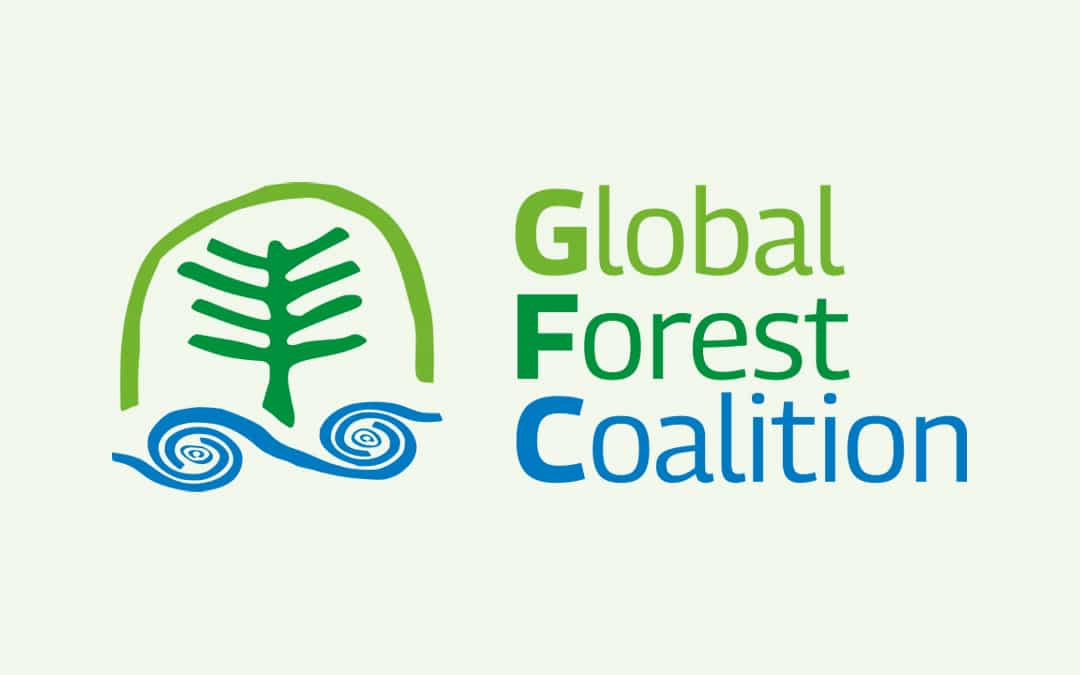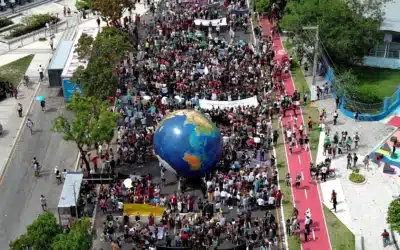Before we report on the national workshop on REDD Safeguards Information Systems and Conflict Resolution mechanisms, which took place from 8 to 12 April in Paraguay, let us talk briefly about reality.
Last year, almost 600.000 hectares of forest were lost in the Paraguayan Chaco. This deforestation does not only have devastating impacts on the environment, it threatens the survival of Indigenous Peoples, including in particular the survival of a number of groups of Indigenous Peoples in voluntary isolation – Paraguay is one of the few countries in the world where peoples in voluntary isolation can still be found. By far the main driver of this environmental disaster is large-scale meat production for export markets, followed by soy production to feed European and Chinese pigs and chickens. Look at you plate today and you will probably see a dish of burned forests.
And please note the majority of deforestation takes place with explicit permission of the Paraguayan State, which continues to hand-out generous licenses for forest conversion accompanied with an environmental impact certificate stating that the impacts are not significant enough to deny a license to burn. Meanwhile, a proposal for a modest tax on soy exports was once again turned down by Paraguayan legislators last week, many of whom are cattle ranchers and/or soy producers themselves.
In the midst of this reality of continuing deforestation with full blessing of the authorities, the Paraguayan government has received a generous 4.7 million USD grant from UN-REDD to make itself ‘ready’ for REDD, an assumed system of payments to ‘compensate’ countries, communities and/or individuals for reducing emissions from deforestation and forest degradation. Who or what will actually provide the payments is as yet unknown. If (and it is a big if) an agreement on REDD financing is reached, it would be incorporated into the new protocol or other ‘legal outcome’ Parties to the UN Framework Convention on Climate Change (UNFCCC) are currently negotiating. The deadline to agree on this outcome is 2015 (but UNFCCC has not exactly build up a great tradition in respecting deadlines) and in the best case scenario that agreement would be ratified and in force by 2020.
As part of the process of becoming ‘ready’ for REDD, Paraguay has to design a so-called ‘Safeguard Information System’ and a ‘conflict resolutions mechanism’. To this aim, a broad range of stakeholders and rightsholders was invited to a 4-day workshop in the capital Asuncion.
The workshop turned out to be more interesting than expected, mainly due to the fact that most participants squarely ignored the official agenda and used the opportunity to talk about the reality of deforestation and Indigenous rights in Paraguay. Many of the invited experts emphasized real life issues in their presentations as well. Victor Illescas from Guatemala for example, who currently serves as Latin American NGO observer to UN-REDD, emphasized during his presentation that real participation meant that people can talk about the issues that really worry them, rather than sticking to the technical issues and terms imposed by UN-REDD. “We see too many workshops in which technicians talk and nobody understands them and they do not even understand the national reality.” He also deplored that there has been a tendency to focus on the financial expectations for REDD, which has caused a lot of tensions, as many people and institutions try to conquer their share of the money.
Happily, during the working groups that followed the presentations, Indigenous and non-Indigenous participants did talk about the national reality in Paraguay. They spoke a language that was different from the technical language used in the presentations and UN-REDD documents. Literally, as the organizers had provided expensive full-time English translation for the two non-Spanish speaking experts that contributed to the workshop, but no translation into the second language of Paraguay, Guarani, which is the first language of most Indigenous and other rural communities. So in Guarani, people explained how their ka’aguy (forest) and y (water) was destroyed by soy plantations and cattle ranching. They talked about the health impacts of climate change, the loss of medicinal plants, traditional knowledge and hunting grounds and the massive land grabbing that is taking place in the country. Even the State itself is involved in land grabbing – despite laws that prohibit the sale of indigenous territories, the National Indigenous Institute has recently been accused of selling away a significant piece of recognized Indigenous territory.
It was pointed out that the famous REDD safeguards are already part of existing laws, but these laws are not respected. There is a culture of lawlessness, impunity and legal insecurity in many parts of the country and the judicial system is totally biased against Indigenous people and small farmers. Under REDD, indigenous people are expected to conserve their forest, but authorities turn a blind eye to the (often foreign) cattle ranchers that destroy massive amounts of forest. The government itself is a cause of many conflicts in the country, they sometimes they declare an area as a natural reserve while at the very same time handing out a license to deforest that area. It was also pointed out that things have gone further backwards since coup d’ etat that was committed in June 2012. Many environmental laws are no longer implemented, or have been replaced by weaker environmental laws (for example in the area of agrochemicals). Several of the processes that had been established by the former Government to ensure improved policy coherence and allow participation of Indigenous Peoples and other rights- and stakeholders in policy-making have been abolished as well.
People pointed out that REDD cannot provide a solution to these structural problems. There has been a tendency, especially amongst Northern institutions and NGOs, to engage in theoretical exercises to invent beautiful standards, safeguards and safeguard information systems for REDD. But most of these norms are already binding law in Paraguay, and those laws are not complied with. Safeguard Information Systems have very little to contribute to a situation in which astonishing corruption scandals and other law violations can be found on the front page of the main newspapers on a daily basis. Likewise, a large number of institutions have responsibilities in the field of conflict resolution, but complaints by Indigenous peoples and small farmers tend to be ignored, and Indigenous Peoples themselves seldom have the capacity to defend their case, There is no need for new mechanisms, but rather for a structural reform of existing mechanisms. Many of these structural problems are rooted in a conflict of cosmovisions. Indigenous people complained that they are constantly visited by technical experts from the capital, or even from abroad, who do not understand the realities they live in, and do not even speak their language. They emphasized that technicians should respect the knowledge and culture of Indigenous Peoples when they consult them.
This gap between UNREDD and reality does not necessarily mean that the 4.7 million destined for REDD readiness in Paraguay has to be wasted. If there would be enough political will, some badly needed reforms and processes could be integrated into the readiness process. For example, as part of the forest inventory process that is mandated by the readiness program, a badly needed Indigenous census and mapping of Indigenous territories could be executed. Existing conflict resolution mechanisms could be reformed and made more accessible for Indigenous and other rural communities, not just in the area of forest policy, but in general. Money could be destined to improve the implementation of existing safeguards through existing mechanisms. But the point is that these reforms should happen now, not when the country is declared “ready” for REDD. A country like Paraguay cannot wait for another 8 years until funding to reduce emissions from deforestation starts to arrive from some miraculous source. And it does not have to wait, as the most important actions to be taken can be financed from the money it has already received.
There are less than 14 million hectares of forest left in the Paraguayan Chaco. If we have to wait until 2020 before action can be undertaken, an estimated 4,8 million hectares of this remaining forest will be lost, while people continue to fiddle about safeguard information systems and conflict resolution mechanisms. Anyone who still believes REDD itself will save Paraguay’s forests, should go back to school and learn basic mathematics…..
Simone Lovera, Sobrevivencia/Friends of the Earth-Paraguay and Global Forest Coalition




